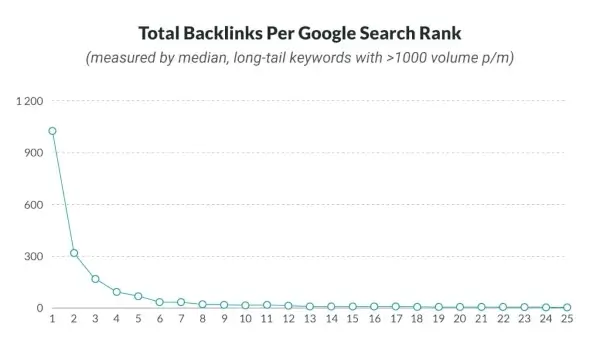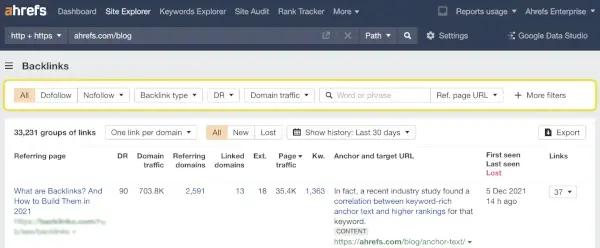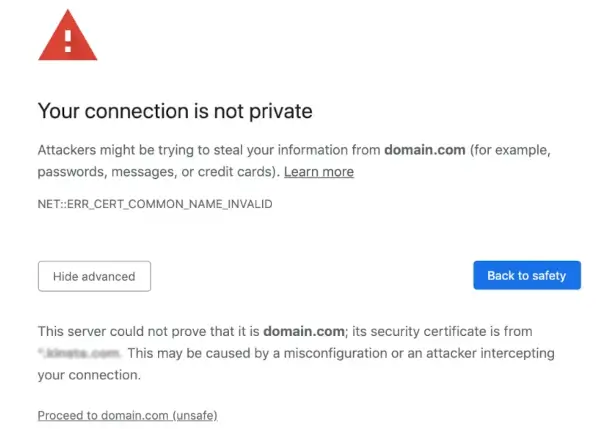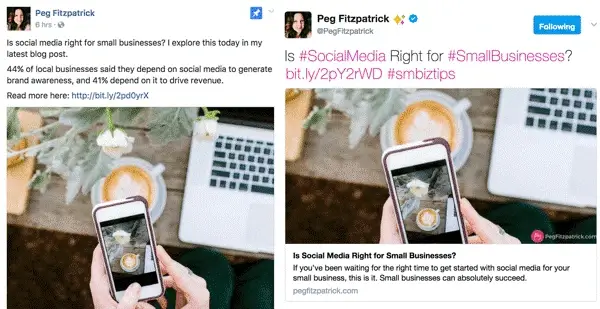
There was a time when getting traffic to your website was simple.
But those days are long gone.
According to research, only 3.45% of web pages get any traffic nowadays, and out of those, a mere 1.94% see between one and ten monthly visits. With Google tweaking its ranking factors seemingly every other week and over 2 billion websites competing for attention, getting eyes on your site has become an uphill battle.
But don’t worry. Here are seven effective ways to increase traffic after building your website:
Table of Contents:
1. Craft High-Quality, Optimized Content
2. Perform Link Building through Guest Posting
3. Ensure Good Website Security
4. Leverage Social Media
5. Run Email Marketing Campaigns
6. Conduct Content Analysis
7. Integrating a Google review widget
Conclusion
1. Craft High-Quality, Optimized Content

SEO, or Search Engine Optimization, ensures that your content gets found by the right audience for website traffic. With good SEO, your content appears at the top of search engine results pages. There’s a direct correlation between content ranking and clickthrough rate, or the number of clicks a link gets divided by the number of times it is shown in SERPs. A Backlinko study found that moving up one position in SERPs increases CTR by a whopping 32.3%. The CTR can give you a good idea of your website traffic.
To ensure good SEO, your content must be high-quality and optimized.
Let’s talk about the first. For Google’s algorithms, high-quality content is genuinely helpful content. This means your content needs to match the search queries your audience is typing into Google. When users search for something specific, your content should provide clear, direct answers to their questions or solutions to their problems.
Google says its automated systems also use the EEATT criteria to determine if the content is useful. EEATT stands for experience, expertise, authoritativeness, and trustworthiness. Although Google has said EEATT isn’t a ranking factor, its systems “give weight” to content that aligns with strong EEATT, especially for topics “that could significantly impact the health, financial stability, or safety of people, or the welfare or well-being of society.” Google calls these Your Money or Your Life (YMYL) topics.
So, when creating your content, especially on YMYL topics, ask yourself the following questions as well:
- Is it based on your first-hand experience? (experience)
- Are you an expert on the topic, and do you have proof of this expertise? (expertise)
- Do others recognize you as an expert? (authoritativeness)
- Do others see you as trustworthy? Is the information you publish accurate, accessible, and valid? (trustworthiness)
Now, to ensure optimized content, you need a solid on-page SEO strategy. Make sure you craft meta descriptions and title tags for your content. You should also have alt text for images and the proper header structure (H1, H2, H3).
Optimize your content for the right target keywords as well. Avoid keyword stuffing, though. SEO professionals recommend a 1-2% keyword density, which refers to the ratio of keywords used to the overall content word count.
Another underused optimization tactic is internal linking. Linking related articles or important pages within your website also helps search engines find, index, and understand all the pages on your site, improving your pages’ ranking on Google.
When incorporating internal links, make sure you use descriptive anchor text. Your links should also sound natural and should direct your target audience to your other relevant content.
2. Perform Link Building through Guest Posting
Here’s another way to boost your SEO and, ultimately, increase your organic website traffic — link building.
The idea is simple: when other websites link back to your content, search engines view your site as more credible and relevant, boosting your rankings. Research shows that websites with more backlinks rank higher on Google.

Source
But link building is not just about getting any site to link back to you. You need to earn links from high-authority, industry-relevant websites to improve your site’s visibility in search results truly.
Guest blogging is one practical way to build those high-quality backlinks. Writing high-quality content for reputable websites in your niche can earn you a backlink to your site.
Guest blogging also exposes you to a new audience. Because of this, you can earn referral traffic, too. When your content is featured on other sites, readers who find it useful will likely click through to your website. This can lead to a steady stream of targeted visitors who are already interested in what you offer.
You can use backlink checker tools like Ahrefs to see your competitors’ backlinks.

Chances are, some of those backlinks were generated by guest posts they’ve written for other sites. Just go through each of the sites on the list. Then, follow their guest post submission guidelines.
When crafting your guest post, don’t just incorporate your link. You need to ensure the content offers genuine value, too. So, do your research. Proofread your work before you submit it, as well. If you submit an article with grammar and spelling mistakes, chances are your work won’t just be rejected; your brand reputation will take a hit, too.
3. Ensure Good Website Security
A secure website is critical for building trust with visitors. When users feel safe browsing your site, they’re more likely to stay, engage, and return.
However, security isn’t just important for user experience (and, therefore, repeat website traffic); it also plays a crucial role in how search engines like Google rank your site.
Google has made it clear that it wants to provide users with not just relevant but also safe browsing experiences. As a result, it tends to rank websites that are secure higher than those that are not.
Even if people do manage to find your content, if your site isn’t secure — say, it doesn’t have an SSL certificate — it is flagged as such. This warning is shown to potential visitors before they even access the site.

Here are other website security improvements you can undertake:
- Improving the quality of your SSL certificate chain
- Upgrading to TLS 1.3. This is the latest version of the Transport Layer Security Protocol that encrypts data sent over the Internet.
- Enabling HTTP3 protocols. This is the latest version of the Hypertext Transfer Protocol that governs how devices exchange data over the Internet.
Consistently monitor your site to ensure it’s always secure. Regularly checking for vulnerabilities and potential security breaches, as well as constant SSL/TLS expiration date monitoring, will help ensure you take the proper corrective or preventive action when required.
Did you know that 16% of website traffic comes from social media, making it the third-largest referrer after organic search?

With billions of users scrolling through platforms like Facebook, Instagram, and LinkedIn daily, social media marketing offers a unique opportunity to drive consistent traffic to your website.
Promoting your website content is the simplest way to drive traffic to your site via social media. Leverage organic posts on your social media accounts. Just make sure you tailor your social media copy to each platform audience. Check out these sample posts below:

Notice how the two organic posts — the first published on Facebook and the second on LinkedIn — promote the same article but in different ways? If you think about it, it makes sense for the LinkedIn post to be much shorter than the one on Facebook. After all, LinkedIn is primarily used by professionals who barely have time to read.
Want to take it a step further? Consider using social media ads. Paid advertising allows targeting specific audiences based on demographics, interests, and behaviors. A well-placed ad can drive instant relevant traffic to your site, whether you’re promoting a product, blog post, or landing page.
Make sure you also actively engage your audience.
Respond to their comments and share social media posts that speak to their needs. This kind of interaction helps build a loyal community that not only follows your social profiles but also visits your website regularly.
Social media can drive traffic to your site in another distinct way. A successful social media strategy can also indirectly boost your site’s SEO and visibility in SERPs. We already know the relationship between site ranking in SERPs and CTR.
Now, how exactly can social media do this? Well, a solid social media strategy helps generate strong social signals (likes, comments, shares, etc.) for your brand. Although social signals aren’t direct ranking factors, they can help you get the attention of others in a position to help your search engine ranking.
Let’s say one of your social media posts promoting your new report on email marketing trends becomes viral. Several authority websites will likely notice that post. They’ll then write an article about your report’s findings, look for the original content on your site, and link to it. Remember what we said about how link building can boost your SEO?
If managing multiple social media channels sounds overwhelming, a social media management tool can make things easier. These tools let you schedule posts, track performance, and interact with your audience across different platforms from a single dashboard.
5. Run Email Marketing Campaigns

Email marketing is one of the most powerful tools in digital marketing. Your email list is made up of people who are already interested in your brand. That means with the right email content sent to their email address, you can easily get them to your site and boost your traffic.
But don’t just send a generic email with some random link taking your subscribers to your site. You need to follow a strategic approach if you want them to click through in the first place.
Personalize your emails, for example. By that, I don’t just mean you should use your subscriber’s first name in your emails. I also mean you should tailor your email content to their own experience.
Let’s say you sell coffee and healthy snacks. Don’t send email newsletters featuring your latest blends or brewing tips to your healthy snack customers. Send them tips on how to stay healthy instead of getting them to your site.
To send these types of personalized emails, segment your audience. Most email marketing platforms can help you categorize your subscribers based on your criteria. Leverage automation, too. This will ensure you send those tailored emails at the right time. For instance, if someone goes to your site, puts a product in their cart, and leaves, you can automatically send an email like the one below to get them back to your site:

Follow email writing best practices to deliver impactful and engaging content.
While you work on your subject lines and email content in the body, do not ignore your email closing and use the proper CTA. Your email signature is just as important. Ensure your email signature showcases your branding effectively. You can do this by incorporating a digital business card you can easily customize. Apart from contact details, personalize it to include either your website, product pages, or relevant blog content links in your e-card. If your subscribers don’t click through to your site in the main email body, you can rest assured they will once they see this colorful and interactive element in your email.
You can leverage many tools to create a digital business card for your email signature. Check online resources to find the best digital business card solutions and determine the correct fit for your business.
6. Conduct Content Analysis

You need to know what’s working and what’s not to increase website traffic. Regularly checking in on your content lets you see which pieces attract potential customers to your site and which don’t. When you know what’s working, you can double down on this piece of content to boost your site traffic. At the same time, you can shun the content that doesn’t bring in the goods.
Analytics tools integrated with your site can make this analysis easy for you. You can see how specific content — from your site or other marketing channels — brings people to your website.
You want to be as specific as possible when conducting your content analysis. So, don’t just look at the particular content topics that help increase website traffic.
Look at how your meta titles, meta descriptions, social media, and email copy should be phrased. Look at the content formats that work for your target audience, too. Do quizzes and infographics on social media work better than video content or mere text?
Based on your findings, you can create a guidebook your team can follow when crafting content that aims to increase website traffic.
Pro tip: Don’t forget to regularly check your content for unauthorized changes.
7. Integrating a Google review widget

Integrating a Google review widget on your website can significantly boost your traffic by enhancing credibility and attracting more visitors. When potential customers see authentic, positive feedback from others, they are more likely to trust your brand and explore your offerings.
This social proof encourages users to stay on your site longer and engage with your content. Additionally, displaying Google reviews can improve your search engine optimization (SEO) by adding fresh, user-generated content, which search engines favor. As a result, your website becomes more visible in search results, driving increased organic traffic and potentially higher conversion rates.
Conclusion
With millions of websites competing for attention, you need a solid plan to get people’s attention and site visitors.
You learned the most significant strategies to increase website traffic.
Craft high-quality and optimized content to increase your visibility in search engine results pages. Also, leverage link-building through guest posting. Ensure good website security, too. Google tends to rank sites that are secure higher than those that are not. Don’t forget to leverage social media platforms, email marketing, and Google Reviews service. Finally, conduct your content analysis to know what works and what doesn’t, and adjust accordingly.
Combine these tactics. Pretty soon, you’ll see those site visitors coming in droves.
